Health Care > EXAM > Pediatric Nursing The Critical Components of Nursing Care 2nd Edition Rudd Test Bank (All)
Pediatric Nursing The Critical Components of Nursing Care 2nd Edition Rudd Test Bank
Document Content and Description Below
MULTIPLE CHOICE 1. A nurse is reviewing changes in healthcare delivery and funding for pediatric populations. Which current trend in the pediatric setting should the nurse expect to find? a. Increa... sed hospitalization of children b. Decreased number of uninsured children c. An increase in ambulatory care d. Decreased use of managed care ANS: C One effect of managed care is that pediatric healthcare delivery has shifted dramatically from the acute care setting to the ambulatory setting. The number of hospital beds being used has decreased as more care is provided in outpatient and home settings. The number of uninsured children in the United States continues to grow. One of the biggest changes in healthcare has been the growth of managed care. DIF: Cognitive Level: Comprehension REF: p. 3 OBJ: Nursing Process Step: Planning MSC: Safe and Effective Care Environment 2. A nurse is referring a low-income family with three children under the age of 5 years to a program that assists with supplemental food supplies. Which program should the nurse refer this family to? a. Medicaid b. Medicare c. Early and Periodic Screening, Diagnostic, and Treatment (EPSDT) program d. Women, Infants, and Children (WIC) program ANS: D WIC is a federal program that provides supplemental food supplies to low-income women who are pregnant or breast-feeding and to their children until the age of 5 years. Medicaid and the Medicaid Early and Periodic Screening, Diagnostic, and Treatment (EPSDT) program provides for well-child examinations and related treatment of medical problems. Children in the WIC program are often referred for immunizations, but that is not the primary focus of the program. Public Law 99-457 provides financial incentives to states to establish comprehensive early intervention services for infants and toddlers with, or at risk for, developmental disabilities. Medicare is the program for Senior Citizens. DIF: Cognitive Level: Application REF: p. 7 OBJ: Nursing Process Step: Implementation MSC: Health Promotion and Maintenance 3. In most states, adolescents who are not emancipated minors must have parental permission before: a. treatment for drug abuse. b. treatment for sexually transmitted diseases (STDs). c. obtaining birth control. d. surgery. ANS: D An emancipated minor is a minor child who has the legal competence of an adult. Legal counsel may be consulted to verify the status of the emancipated minor for consent purposes. Most states allow minors to obtain treatment for drug or alcohol abuse and STDs and allow access to birth control without parental consent. DIF: Cognitive Level: Application REF: p. 12 OBJ: Nursing Process Step: Planning MSC: Safe and Effective Care Environment 4. A nurse is completing a clinical pathway for a child admitted to the hospital with pneumonia. Which characteristic of a clinical pathway is correct? a. Developed and implemented by nurses b. Used primarily in the pediatric setting c. Specific time lines for sequencing interventions d. One of the steps in the nursing process ANS: C Clinical pathways measure outcomes of client care and are developed by multiple healthcare professionals. Each pathway outlines specific time lines for sequencing interventions and reflects interdisciplinary interventions. Clinical pathways are used in multiple settings and for clients throughout the life span. The steps of the nursing process are assessment, diagnosis, planning, implementation, and evaluation. DIF: Cognitive Level: Comprehension REF: p. 6 OBJ: Nursing Process Step: Planning MSC: Safe and Effective Care Environment 5. When planning a parenting class, the nurse should explain that the leading cause of death in children 1 to 4 years of age in the United States is: a. premature birth. b. congenital anomalies. c. accidental death. d. respiratory tract illness. ANS: C Accidents are the leading cause of death in children ages 1 to 19 years. Disorders of short gestation and unspecified low birth weight make up one of the leading causes of death in neonates. One of the leading causes of infant death after the first month of life is congenital anomalies. Respiratory tract illnesses are a major cause of morbidity in children. DIF: Cognitive Level: Application REF: p. 9 OBJ: Nursing Process Step: Implementation MSC: Safe and Effective Care Environment 6. Which statement is true regarding the quality assurance or incident report? a. The report assures the legal department that there is no problem. b. Reports are a permanent part of the clients chart. c. The nurses notes should contain the following: Incident report filed and copy placed in chart. d. This report is a form of documentation of an event that may result in legal action. ANS: D An incident report is a warning to the legal department to be prepared for potential legal action; it is not a part of the clients chart or nurse documentation. DIF: Cognitive Level: Knowledge REF: p. 14 OBJ: Nursing Process Step: Implementation MSC: Safe and Effective Care Environment 7. Which client situation fails to meet the first requirement of informed consent? a. The parent does not understand the physicians explanations. b. The physician gives the parent only a partial list of possible side effects and complications. c. No parent is available and the physician asks the adolescent to sign the consent form. d. The infants teenage mother signs a consent form because her parent tells her to. ANS: C The first requirement of informed consent is that the person giving consent must be competent. Minors are not allowed to give consent. An understanding of information, full disclosure, and voluntary consent are requirements of informed consent, but none of these is the first requirement. DIF: Cognitive Level: Comprehension REF: p. 12 OBJ: Nursing Process Step: Implementation MSC: Safe and Effective Care Environment 8. A nurse assigned to a child does not know how to perform a treatment that has been prescribed for the child. What should the nurses first action be? a. Delay the treatment until another nurse can do it. b. Make the childs parents aware of the situation. c. Inform the nursing supervisor of the problem. d. Arrange to have the child transferred to another unit. ANS: C If a nurse is not competent to perform a particular nursing task, the nurse must immediately communicate this fact to the nursing supervisor or physician. The nurse could endanger the child by delaying the intervention until another nurse is available. Telling the childs parents would most likely increase their anxiety and will not resolve the difficulty. Transfer to another unit delays needed treatment and would create unnecessary disruption for the child and family. DIF: Cognitive Level: Application REF: p. 11 OBJ: Nursing Process Step: Implementation MSC: Safe and Effective Care Environment 9. A nurse is completing a care plan for a child and is finishing the assessment phase. Which activity is not part of a nursing assessment? a. Writing nursing diagnoses b. Reviewing diagnostic reports c. Collecting data d. Setting priorities ANS: D Setting priorities is a part of planning. Writing nursing diagnoses, reviewing diagnostic reports, and collecting data are parts of assessment. DIF: Cognitive Level: Comprehension REF: p. 19 OBJ: Nursing Process Step: Planning MSC: Physiological Integrity 10. Which patient outcome is stated correctly? a. The child will administer his insulin injection before breakfast on 10/31. b. The child will accept the diagnosis of type 1 diabetes mellitus before discharge. c. The parents will understand how to determine the childs daily insulin dosage. d. The nurse will monitor blood glucose levels before meals and at bedtime. ANS: A The outcome is stated in client terms, with a measurable verb and a time frame for action. The verb accept is difficult to measure. The goal of accepting a diagnosis before hospital discharge is unrealistic. Outcomes should be stated in client terms. Nursing actions are determined after outcomes are developed in the implementation phase of the nursing process. DIF: Cognitive Level: Application REF: p. 20 OBJ: Nursing Process Step: Planning MSC: Safe and Effective Care Environment MULTIPLE RESPONSE 1. A nurse is reviewing the nursing care plan for a hospitalized child. Which statements are collaborative problems? Select all that apply. a. Risk for injury b. Potential complication of seizure disorder c. Altered nutrition: Less than body requirements d. Fluid volume deficit e. Potential complication of respiratory acidosis ANS: B, E In addition to nursing diagnoses, which describe problems that respond to independent nursing functions, nurses must also deal with problems that are beyond the scope of independent nursing practice. These are sometimes termed collaborative problemsphysiological complications that usually occur in association with a specific pathological condition or treatment. The potential complications of seizure disorder and respiratory acidosis are physiological complications that will require physician collaboration to treat. Risk for injury, altered nutrition, and fluid volume deficit will respond to independent nursing functions. DIF: Cognitive Level: Application REF: p. 20 OBJ: Nursing Process Step: Planning MSC: Safe and Effective Care Environment 2. Which nursing activities do not meet the standard of care? Select all that apply. a. Failure to notify a physician about a childs worsening condition b. Calling the supervisor about staffing concerns c. Delegating assessment of a new admit to the Unlicensed Assistive Personnel (UAP) d. Asking the Unlicensed Assistive Personnel (UAP) to take vitalsigns e. Documenting that a physician was unavailable and the nursing supervisor was notified ANS: A, C A nurse who fails to notify a physician about a childs worsening condition and delegating the assessment of a new admit to a UAP do not meet the standard of care. Calling the supervisor about staffing concerns, asking the UAP to take vitalsigns, and documenting that a physician could not be reached and the nursing supervisor was notified all meet the standard of care. Chapter 2. Standards of Practice and Ethical Considerations Multiple Choice 1. Leah is a new graduate nurse and has questions about her scope of practice. The best place to review would be: 1. The code of ethics. 2. The standards of practice and professional performance. 3. The NCLEX exam. 4. The state licensing body. ANS: 2 Feedback 1.Applies to the accountability and protection for the public 2.Benchmark for quality and accountability to provide professional guidance 3.This is the basic exam, but it does not give guidance on this matter. 4.The state has rules and regulations, but it is not the source for overall professional accountability and guidance. 2. The Code of Ethics for Nurses is characterized by all of the following except: 1. It serves as a guide to empower individuals. 2. It upholds ethics, principles, rights, duties and virtues. 3. It is a private statement for nurses only. [Show More]
Last updated: 1 year ago
Preview 1 out of 305 pages

Reviews( 0 )
Document information
Connected school, study & course
About the document
Uploaded On
Jun 12, 2022
Number of pages
305
Written in
Additional information
This document has been written for:
Uploaded
Jun 12, 2022
Downloads
0
Views
34


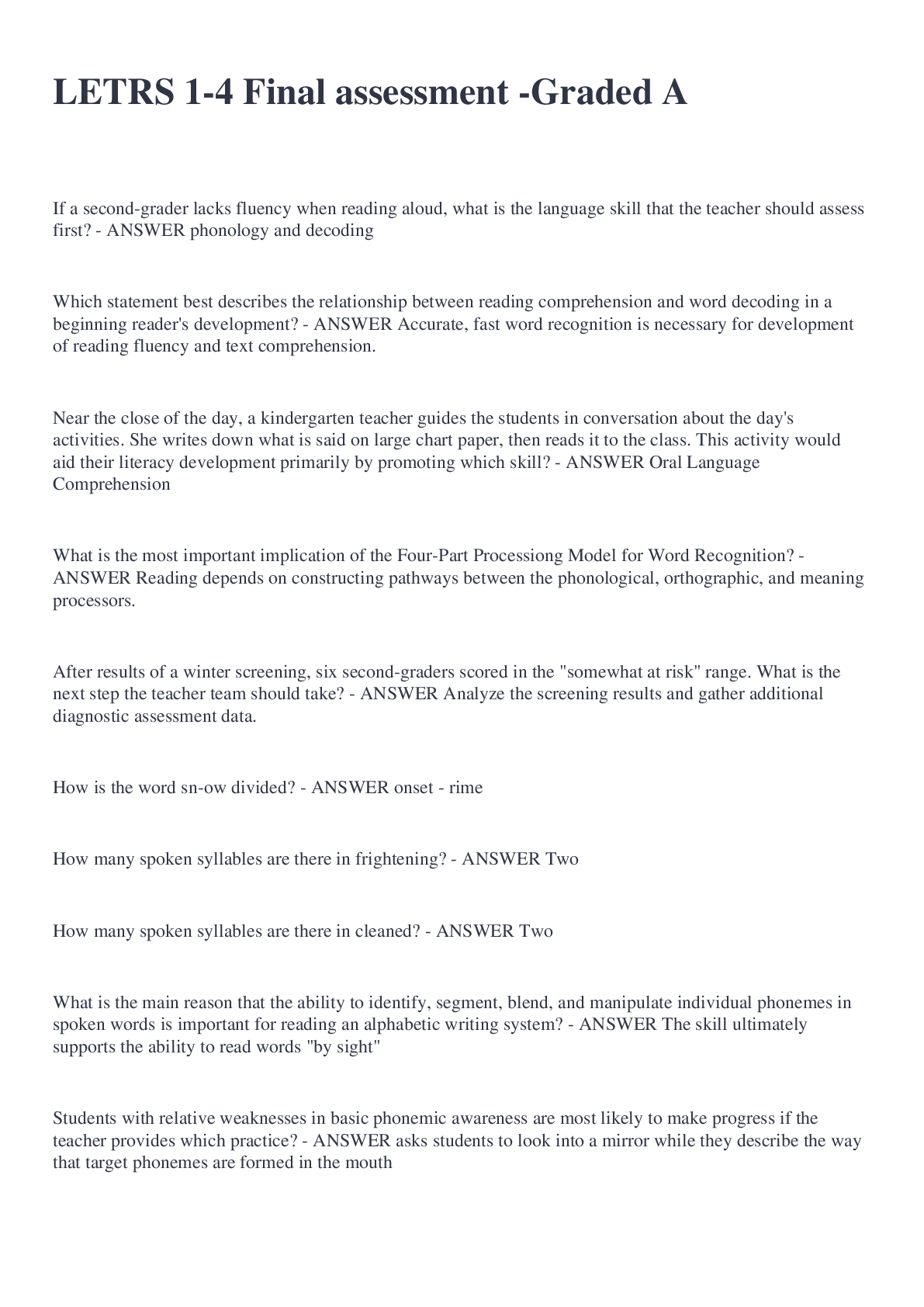


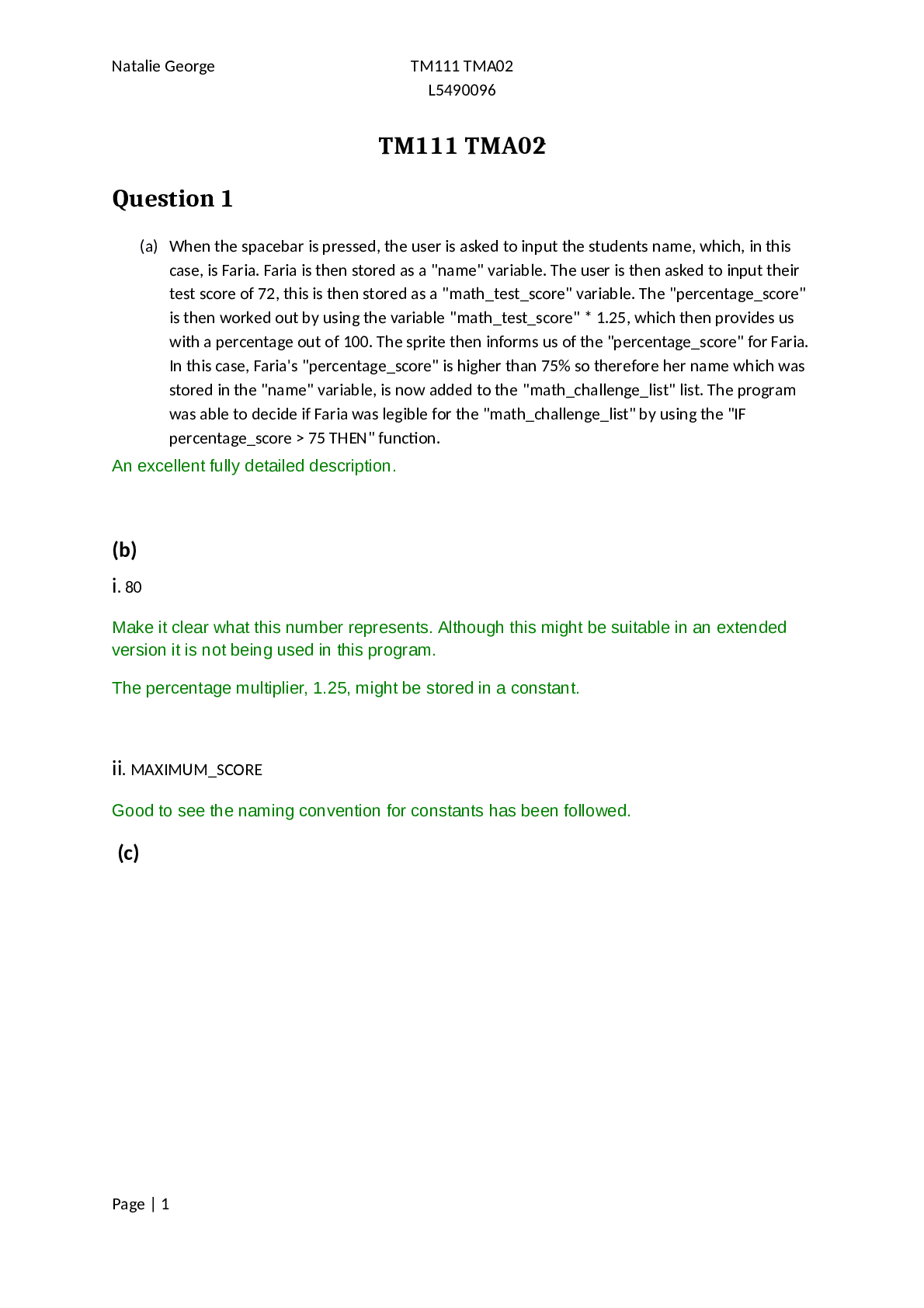


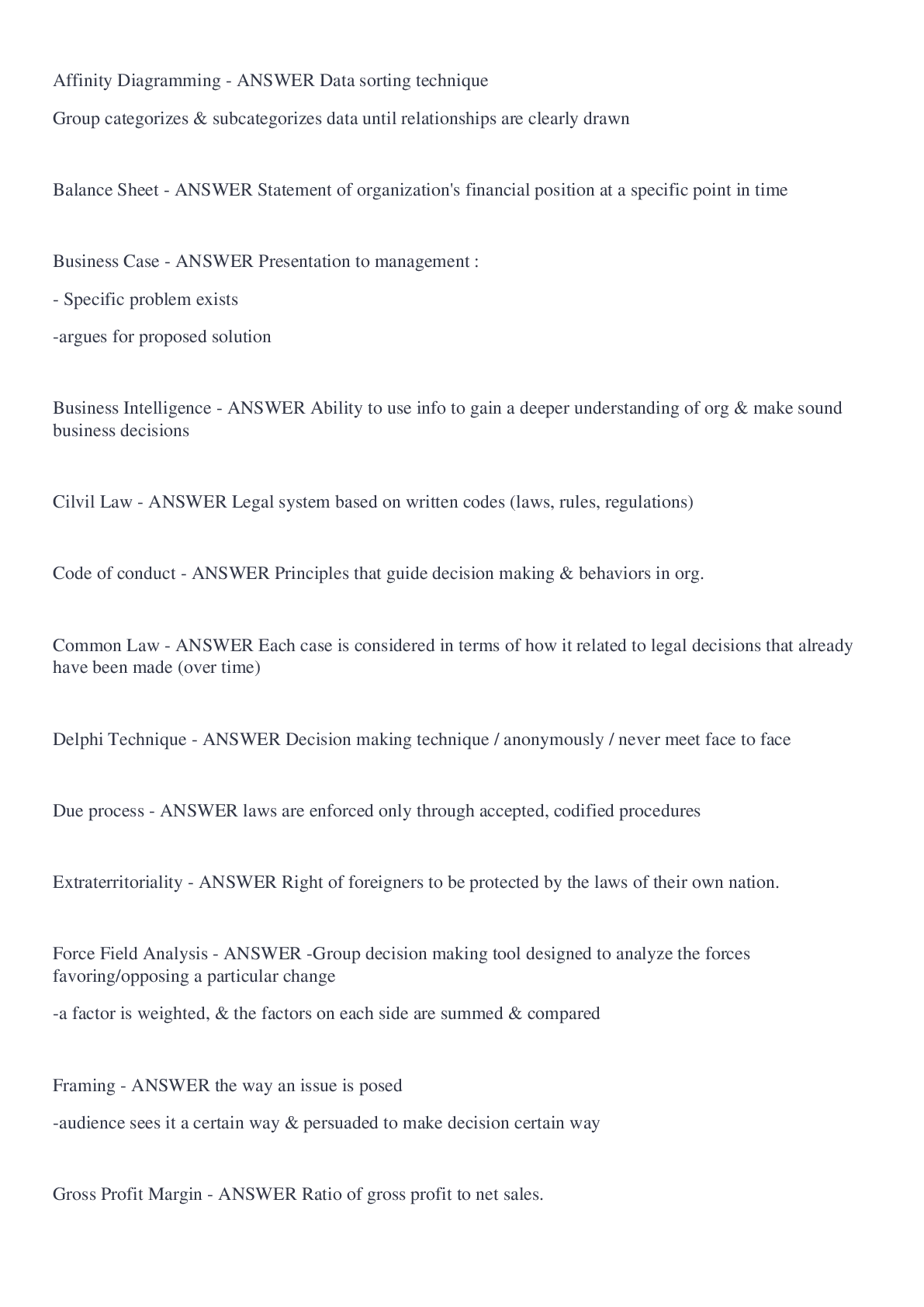

.png)
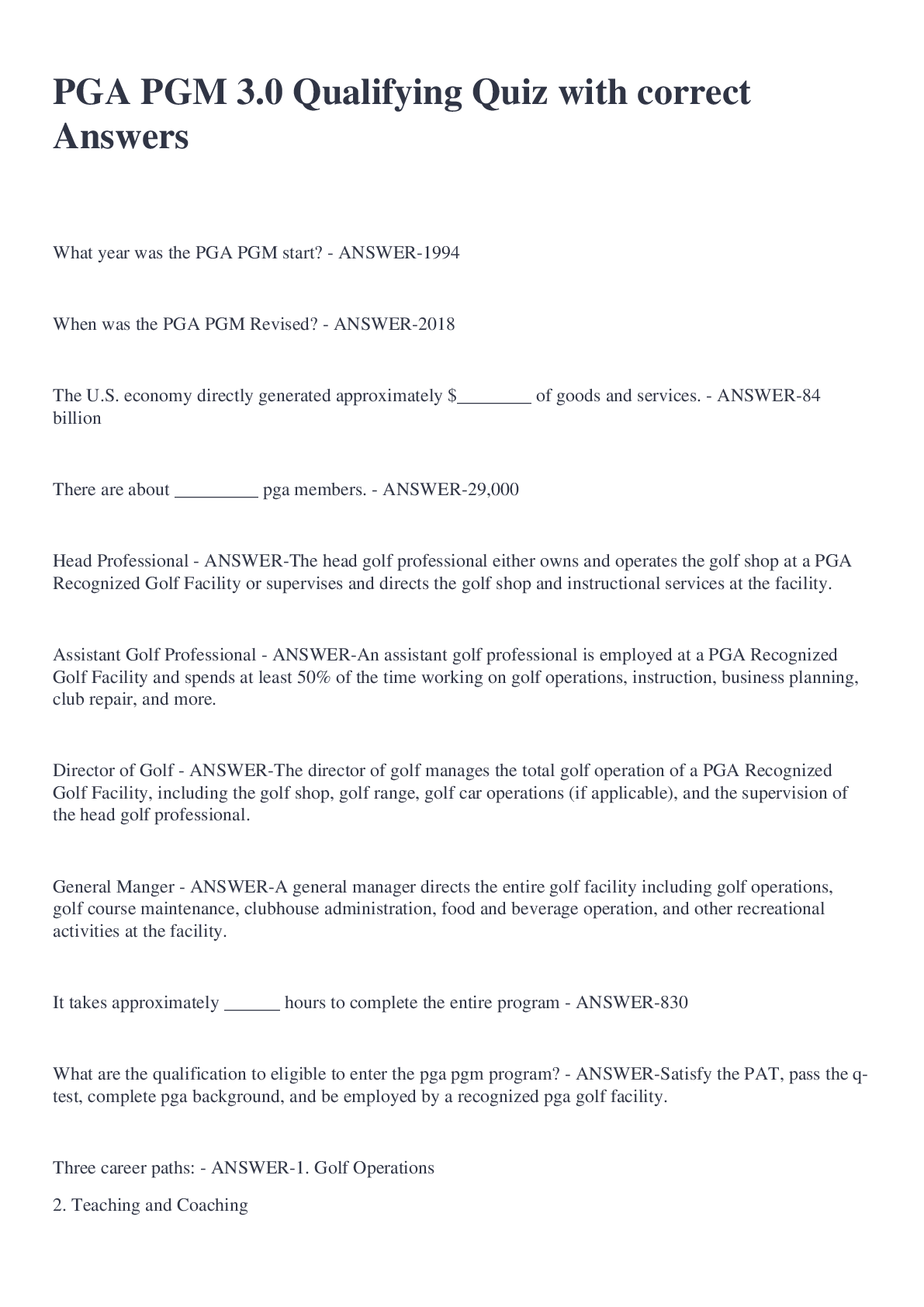

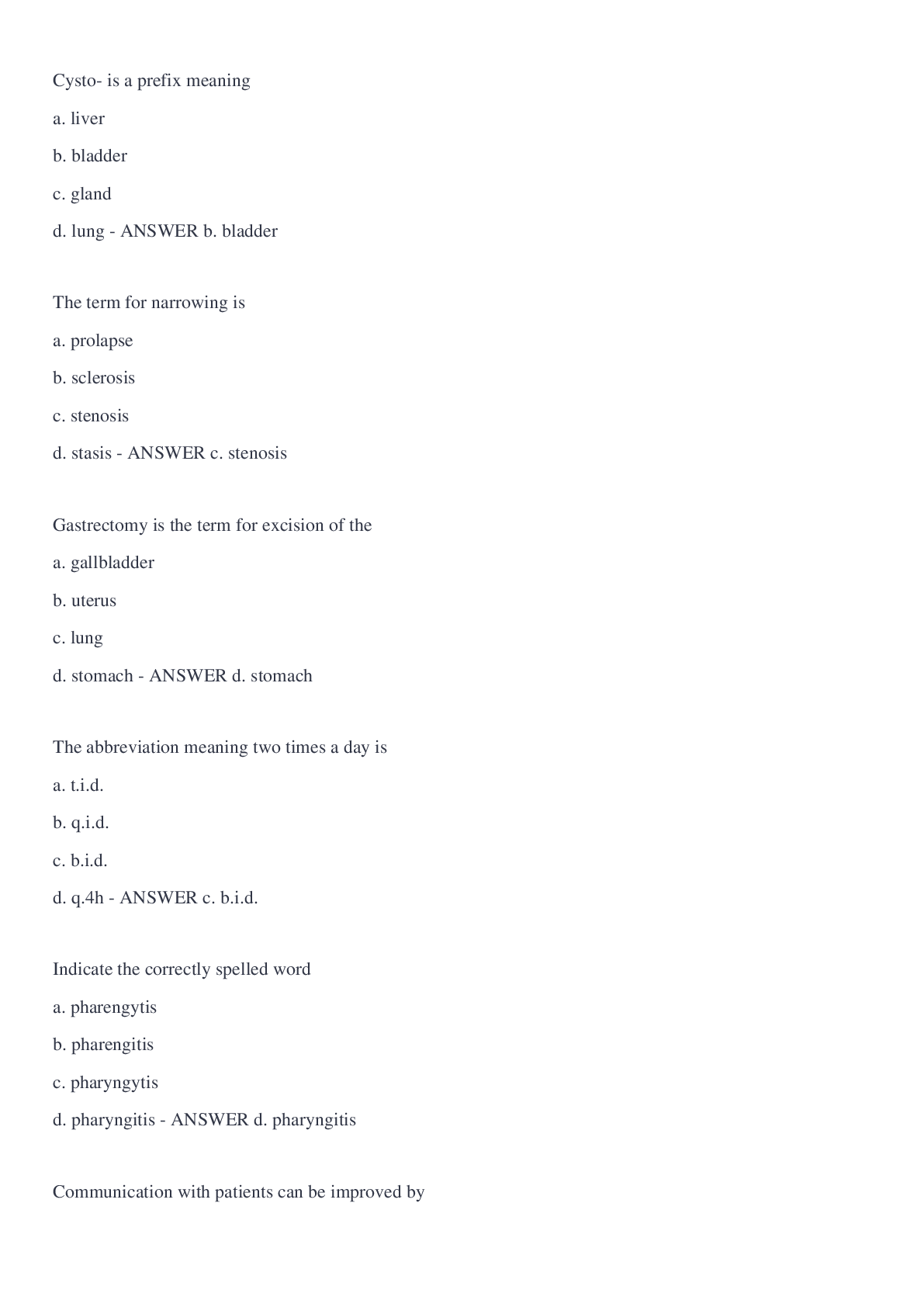


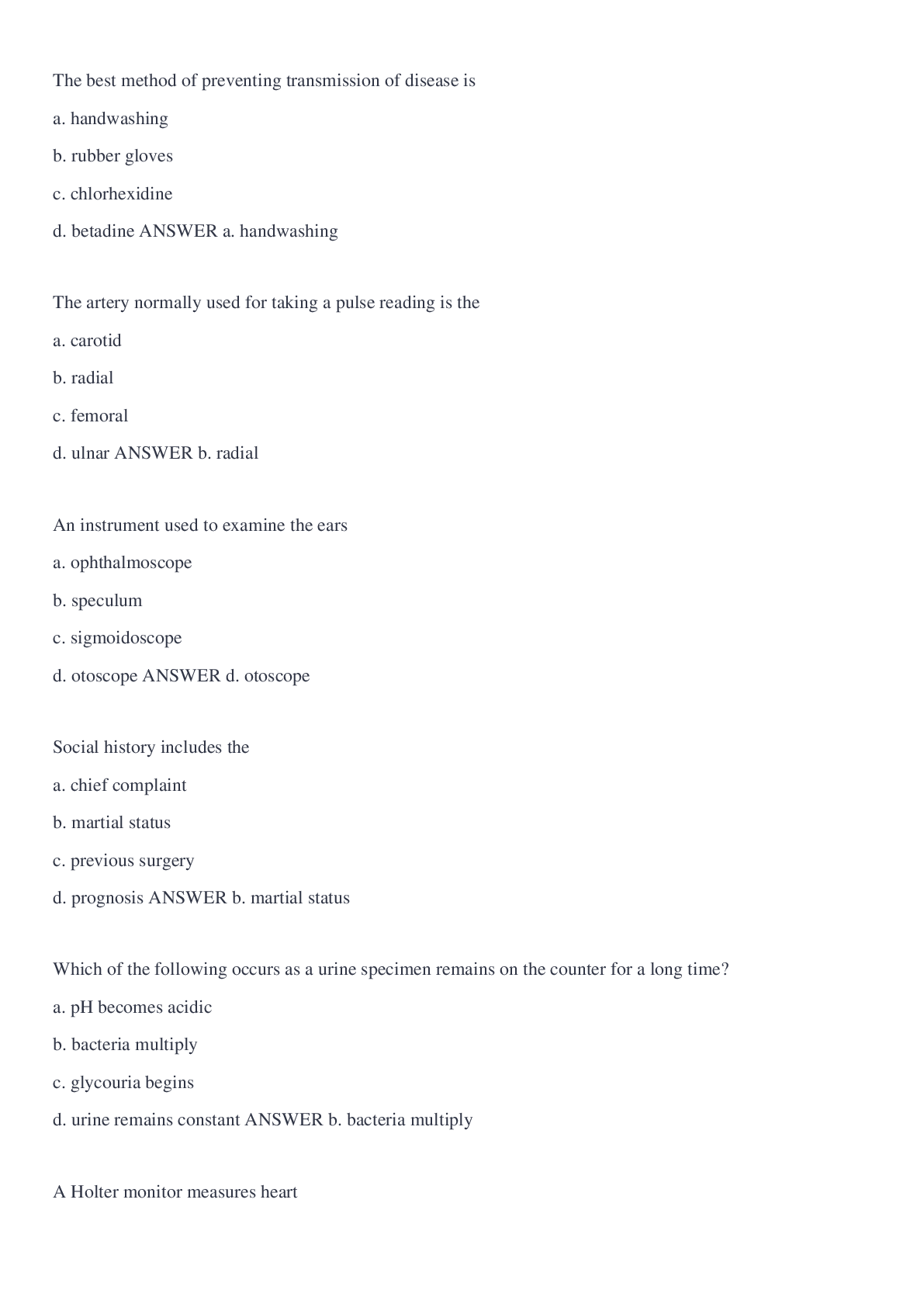
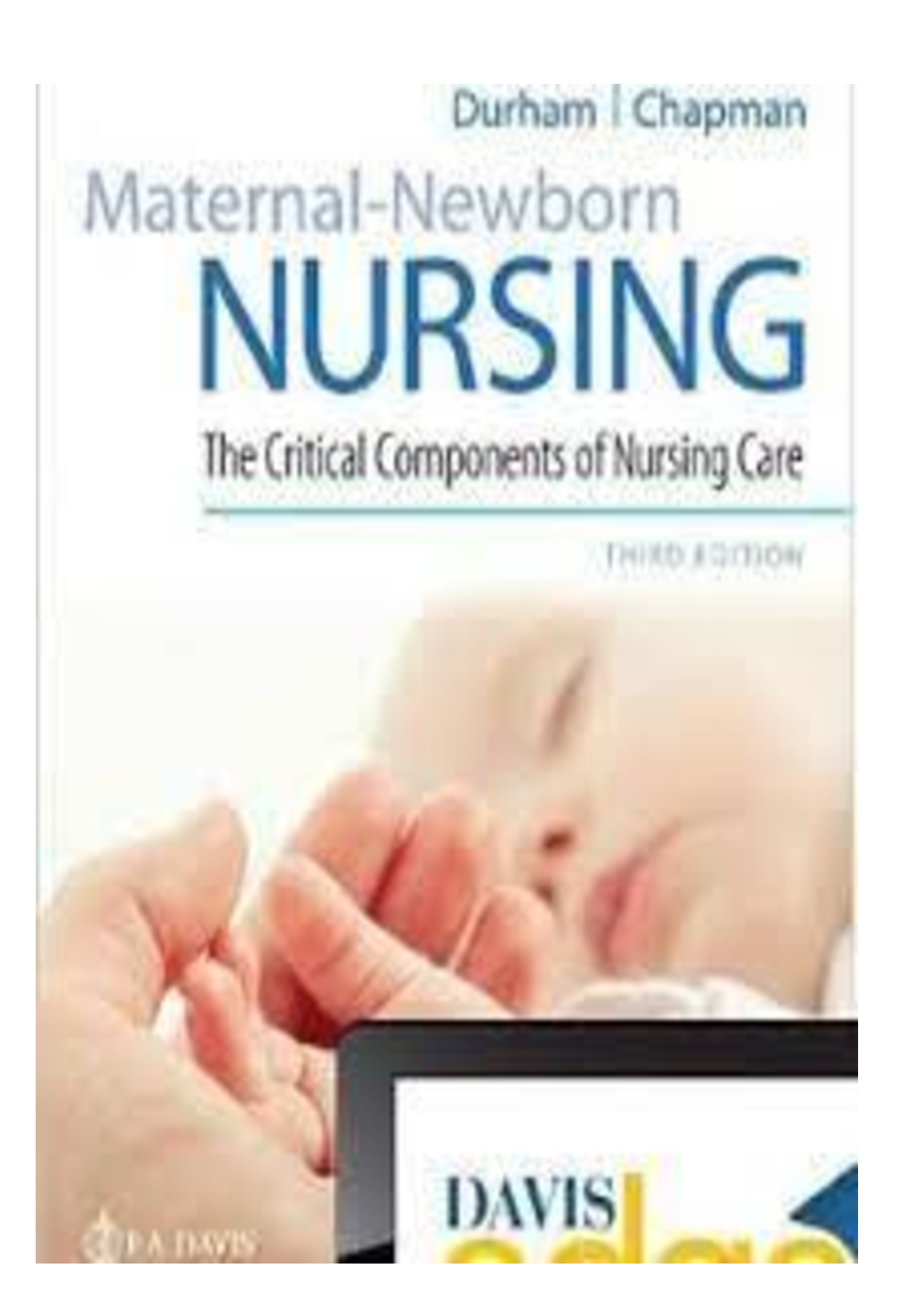
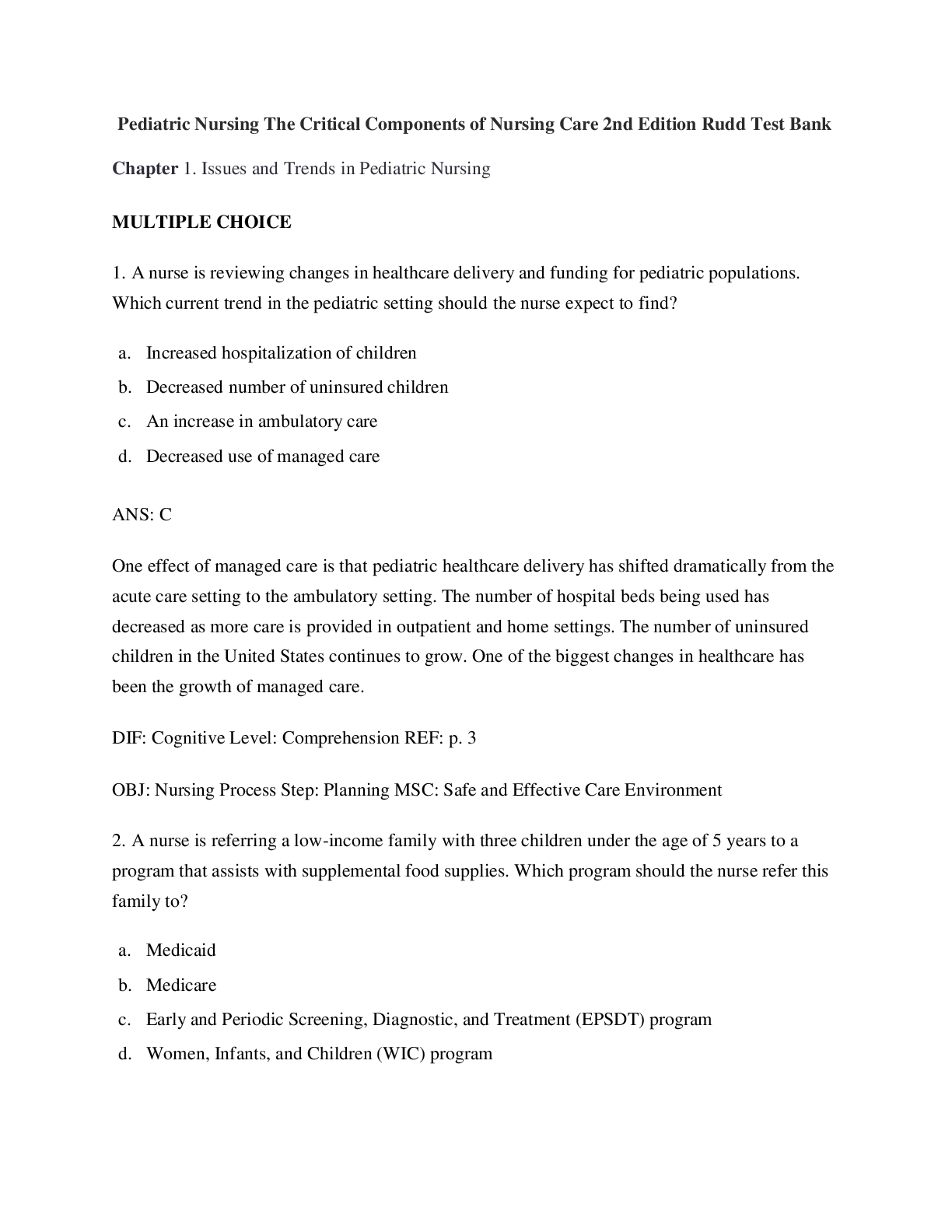
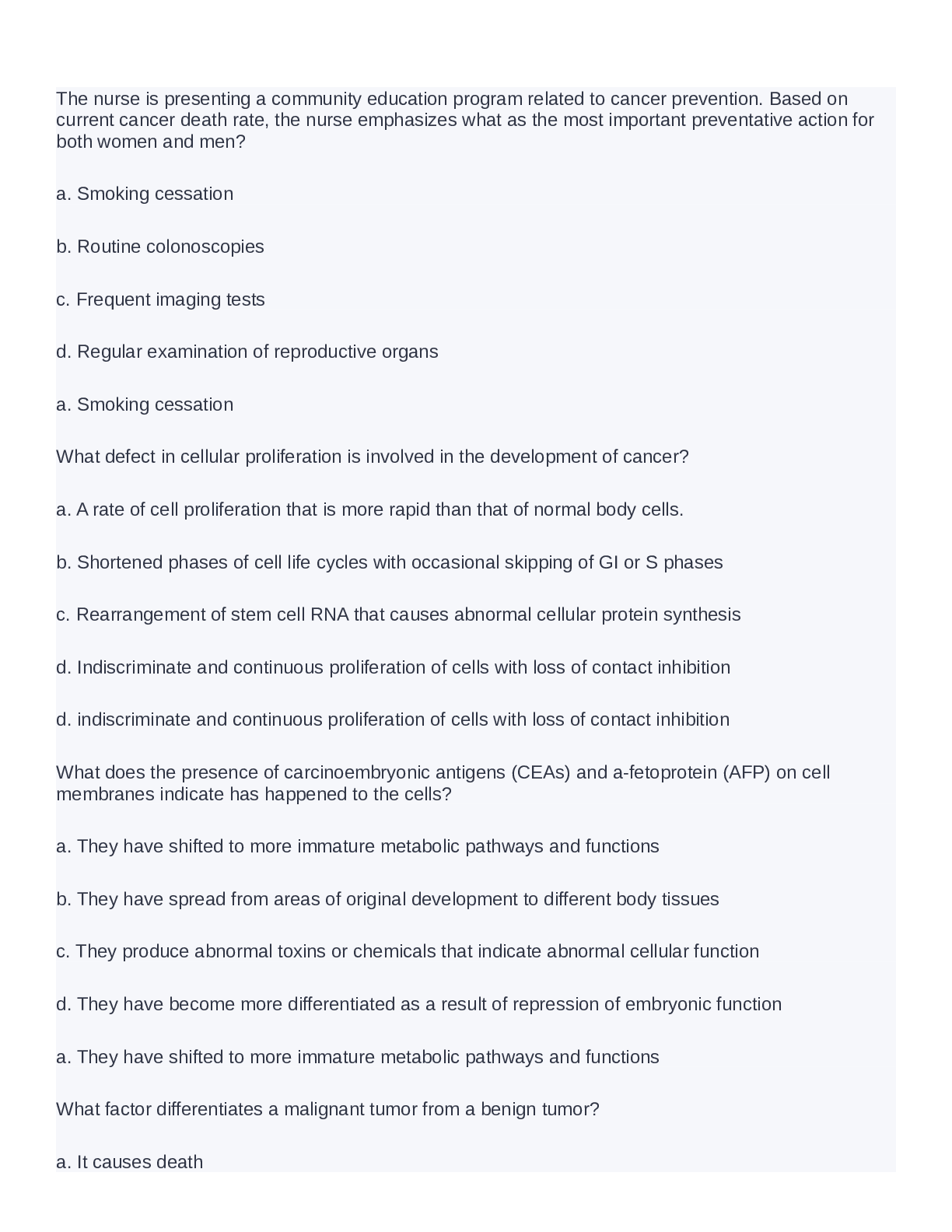

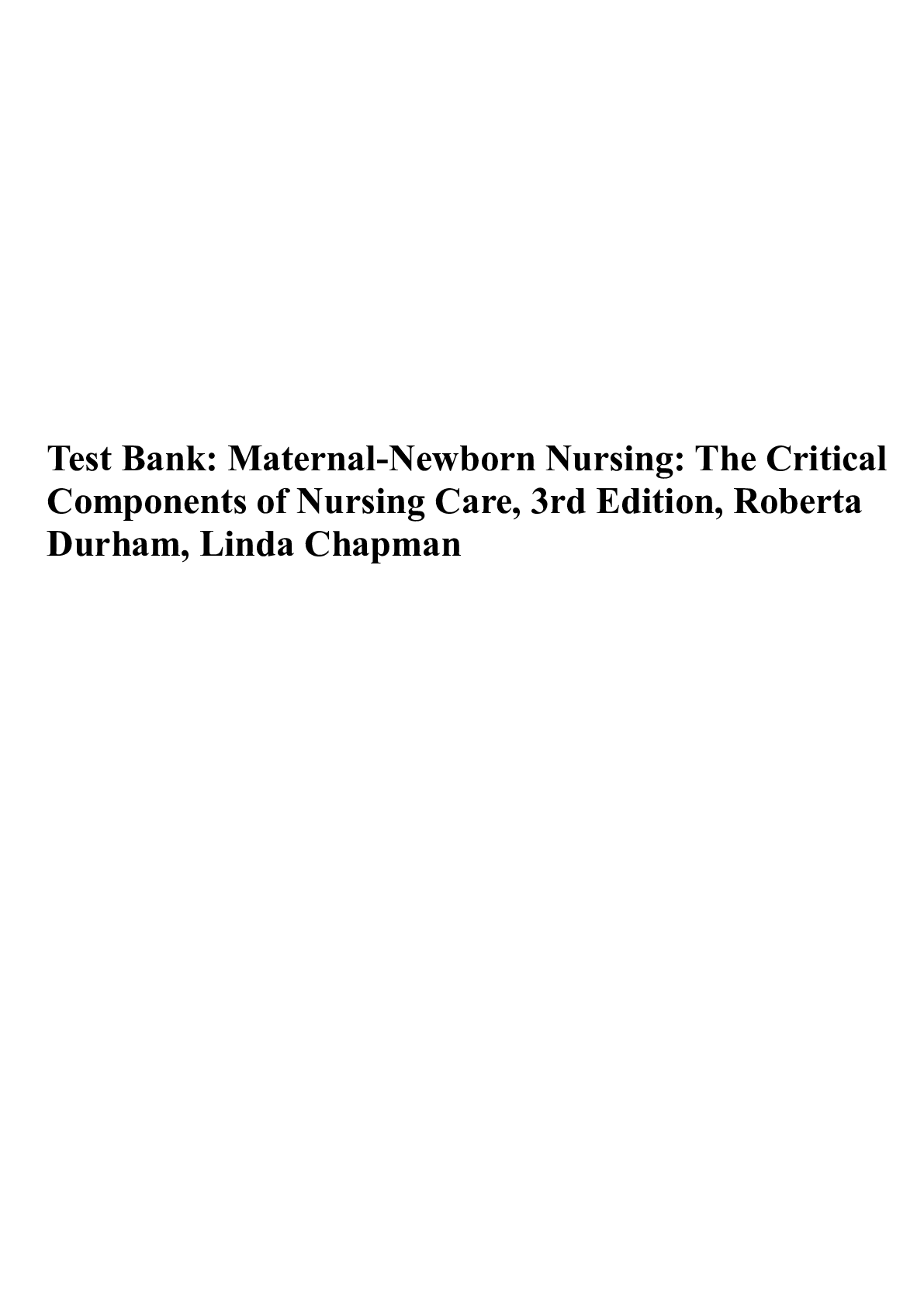




.png)

